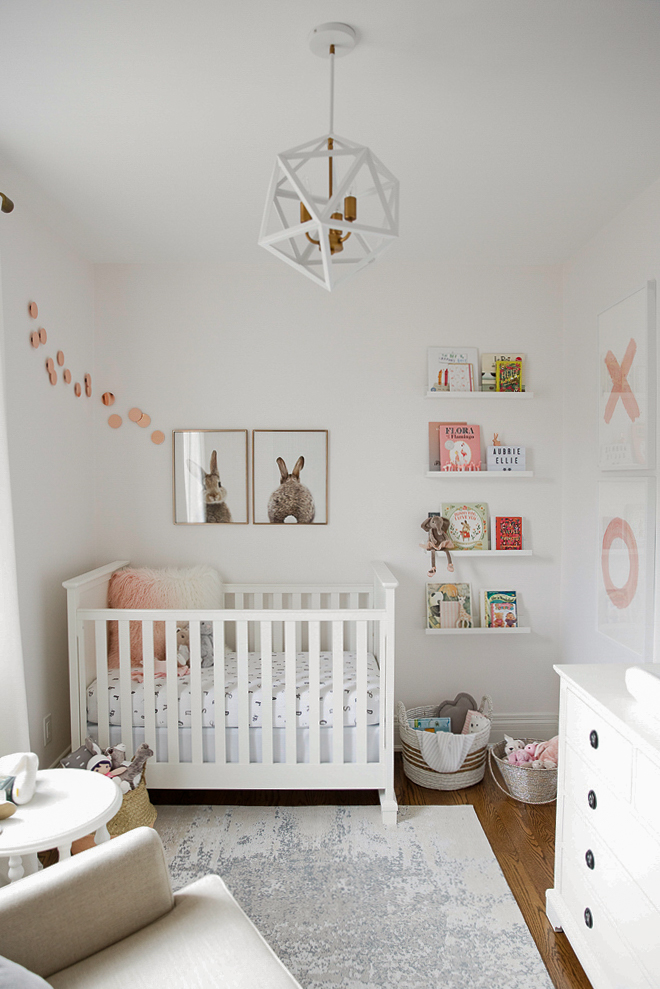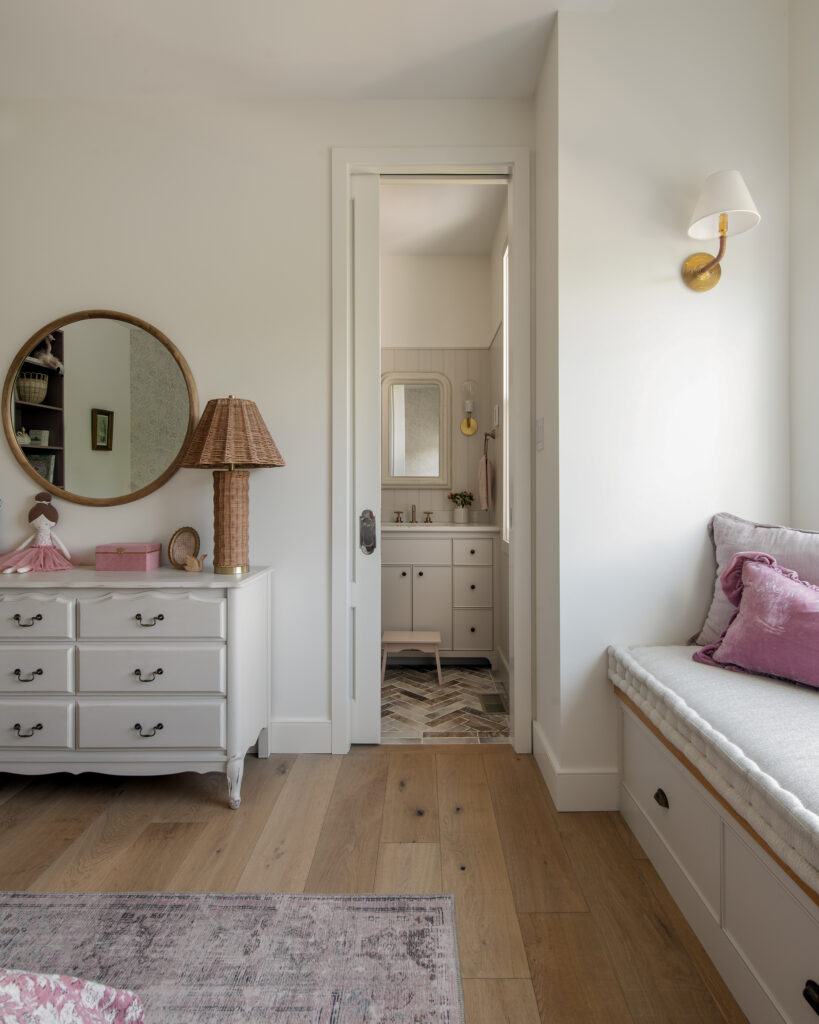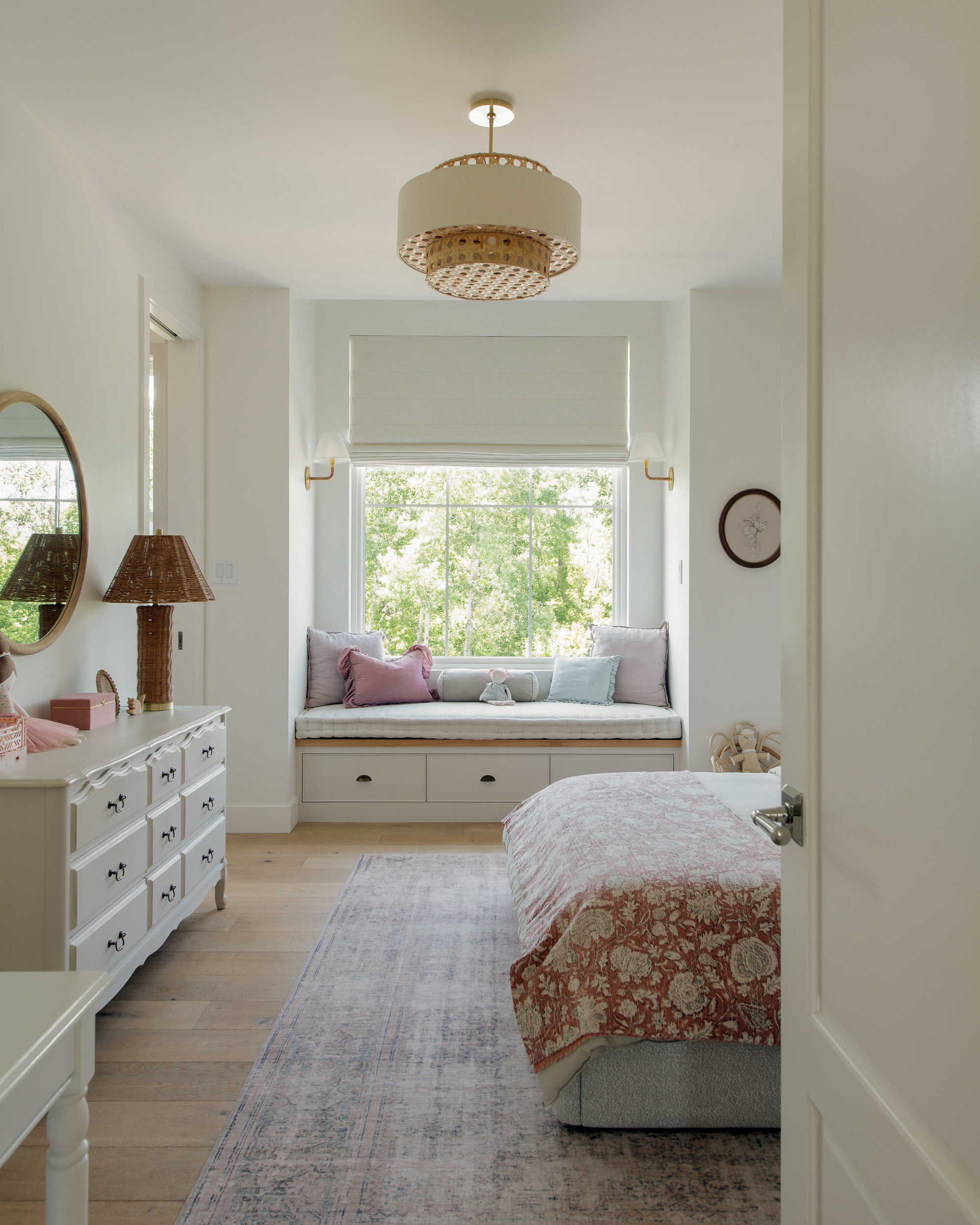It’s a story as old as time. Your youngest insists their bedroom needs to be a safari theme or painted in their favourite team’s “firetruck red.” Meanwhile, your dreams of a timeless, sophisticated space that feels cohesive with the rest of your home stays just that – a dream.
Sound familiar?
I know SO many parents struggle with balancing their design tastes and vision with their children’s (often very strong) opinions about their living spaces.
But instead of ignoring their input completely, what if including kids in home décor decisions could actually make your home more refined yet inspired, more functional yet meaningful?
It’s possible! And the benefit, at least from my experience? When our kids have a say in their environment, they cultivate a sense of ownership, creativity, and appreciation for where they call home.
In this post, we’ll explore age-appropriate ways to involve children in interior styling and family-friendly design, turning decorating into quality bonding time while creating rooms that truly work for everyone.
1. Set Clear Boundaries
Children thrive with structure, and home decor projects are no different.
Before you begin, be sure to set clear boundaries. This is not to limit their creativity but you’ll find it allows for a productive, enjoyable experience for both kids and adults.
How to Set Design Boundaries:
- Colour within the lines: Instead of “you can pick any color you want,” try something like – “We’re choosing between these three shades of blue.” This gives them a sense of control while keeping your sanity.
- Budget parameters: Sharing age-appropriate info like “We have $XXX to spend on your room” helps kids understand real-world constraints and makes them more thoughtful about their choices.
- Safety first: Take time to explain why certain materials or furniture placements are off-limits. This teaches them to think practically about design decisions.
- Whole-home cohesion: Frame it positively: “Your room can reflect your interests, but it should feel connected to our family’s overall style.” This helps them understand that personal expression can coexist with thoughtful design.
2. Let Them Have a Real Say
Giving children room to make decisions in age-appropriate ways helps them feel invested and excited in the process. Also, when they feel heard and respected, they tend to take better care of their spaces and cultivate an appreciation for “home.”
Meaningful Choices by Age:
Toddlers (Ages 2-4)
- Selecting between two bedding patterns
- Choosing which stuffed animals and/or toys to display
- Picking their favourite art prints (which can easily be swapped out as they grow)
Elementary (Ages 5-8)
- Deciding on bedroom themes or colour schemes
- Arranging books and toys on their shelves
- Deciding on accent fabrics and colours
Tweens (Ages 9-12)
- Creating mood boards and planning room layouts
- Organizing closet and storage systems
- Having input on shared family spaces
A perfect example of this is my son Oscar’s hockey wall. We brainstormed creative ways to display his jerseys, and he helped me transform his little shelf from a LEGO exhibit into a special spot where he stores his hockey cards and pucks. His pride in that corner of his room makes me so happy.
Teens (Ages 13+)
- Complete creative control over their personal space (within those budget/design/safety boundaries)
- Shopping for their own decor items
- Learning about budgeting and design trade-offs
Regardless of your children’s age, the goal here is to build confidence, decision-making skills, and personal style awareness while creating interiors where each kid’s development and happiness can soar.
3. Make It an Interactive Activity
This is an opportunity to bond as a family as you’re working to make your home feel more personal and thoughtful.
Theme Identification Games (Ages 3+)
- What to do: look through magazines or online inspiration together, then create mood boards with fabric swatches, paint samples, and magazine cutouts.
- Questions to ask: “What makes you feel happy in this room?” “What colours make you feel calm?”
- Learning opportunity: teach design vocabulary (ex. timeless, layered, coordinated, warm, fresh).
Pinterest Board Pinning Sessions (Ages 5+)
- What to do: create family Pinterest boards for room inspiration. Each family member adds 5-10 pins, then everyone discusses common themes and interests. You can also screenshot favourites to reference during shopping trips. Kids are SO perceptive when it comes to shopping in person. I find it fun to go to places like HomeSense with my kids because they’ll show me things saying, “This would look good here” or “Can we try this in my room?”
- Questions to ask: “What do your pins have in common?” “What’s one thing from this picture that we can recreate in your space?”
- Learning opportunity: kids articulate what they like and why!
Room Planning Adventures (Ages 6+)
- What to do: use graph paper or online room planners to design layouts together. You can also cut out paper furniture pieces and arrange them on your room sketches.
- Questions to ask: “Where should we put your desk so you have good lighting for homework?” “Which layout makes the room feel more comfortable and enjoyable to you?”
- Learning opportunity: problem-solving and critical thinking. Kids also begin to understand design trade-offs (ex. if the bed goes by the window, where does that leave room for the bookshelf?).
4. Arrange Furniture Together
You learn through doing, and arranging furniture together is no different. The physical effort this requires teaches spatial reasoning, problem-solving, and collaboration, making them feel like true partners in the project.
Age-Appropriate Involvement
Younger Kids (Ages 3-6)
- Help carry small items like pillows, books, and decorative objects
- Test out arrangements (ex. “Sit here and tell me if you can see the TV comfortably”)
- Move lightweight items like ottomans and small chairs
Middle Kids (Ages 7-11)
- Help measure spaces and furniture
- Test functionality: “Can you reach your books from your bed?”
- Learn about traffic flow and room balance
Older Kids (Ages 12+)
- Full participation in furniture arrangement decisions
- Problem-solving challenging layouts
- Understanding the “why” behind design choices
5. Celebrate Their Work (& Document the Journey)
Recognition matters! Children need to see and hear that their design contributions are valued and appreciated.
Take Time to Celebrate
Take before-and-after photos of projects they helped with, and let them give “tours” of their spaces to family and friends. Their pride in explaining design choices will make your heart happy.
Build Confidence
Use positive reinforcement: “You have such a good eye for colour combinations” or “I love how thoughtfully you arranged your bookshelf.” Also, acknowledge their problem-solving: “Your idea for storing art supplies was so smart!”
Make It A Thing
Consider making annual room refresh projects a tradition. Kids who feel successful in design are more confident tackling future projects, and these shared experiences create such special memories.
When A Designer’s Kids Are The Clients
As an interior designer, I’ve had the chance to watch my own children’s spaces evolve from carefully curated nurseries to big-kid rooms that reflect their growing personalities. Each stage has taught me something new about balancing professional design principles with the wonder and whimsy of being a kid.
The same foundational design concepts – functionality, beauty, and personal expression – adapt nicely to different ages and personalities. What changes is how we implement them and how much control we gradually hand over to our children. What a gift it is to be part of this growth!


Aubrie’s Nursery – 2017 (Left), Aubrie’s Big Girl Room – 2025 (Right)
Including children in the design process isn’t just about creating inspiring spaces – it’s about raising creative individuals who learn to appreciate that our surroundings impact how we feel and function.
A Few Teachable Moments:
- Home reflects family values and individual personalities
- Design collaboration strengthens family relationships and communication
- Practical life skills in planning, budgeting, and problem-solving
- How to create meaningful traditions around making a house truly feel like home
Ready to Start Your Family Design Journey?
Start small: Pick one area where your child can have real input this month. Maybe it’s rearranging their bookshelf or choosing new throw pillows for the family room.
Share your projects: I’d love to see your family design adventures – share them on social media and tag @maisonellieinteriors.
Get expert guidance: If you’re feeling overwhelmed about including everyone’s vision while maintaining a cohesive home, book a consultation to learn how Maison Ellie can help.
Stay inspired: Sign up for our newsletter, Little Glimmers, for ongoing family-friendly design transformations and tips!
The most inspiring homes are where every family member feels seen, heard, and valued. When children contribute to creating their environment, they learn that their house isn’t just where they live – it’s a place they fill with love, intention, and shared dreams.
And sometimes, just sometimes, that safari-inspired wallpaper might actually work beautifully with your sophisticated vision. Trust me, I’ve seen it happen.

Be the first to comment